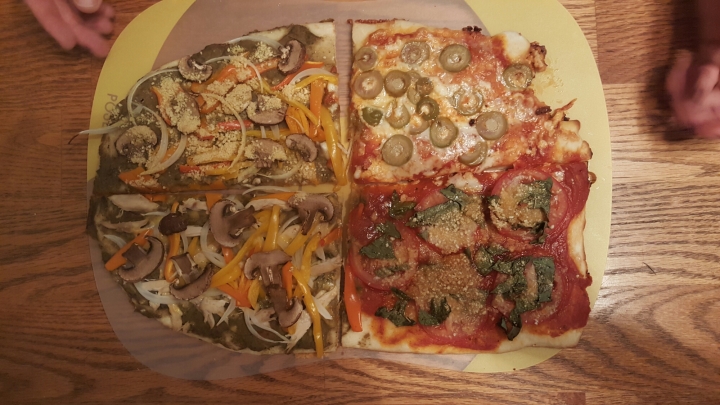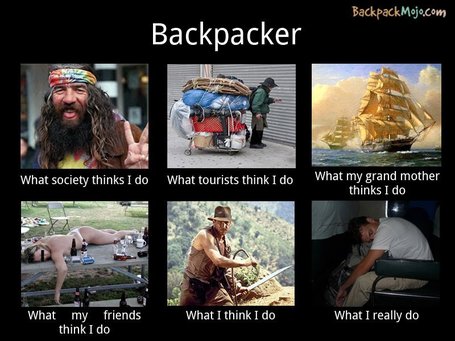I take a lot of road trips. About every weekend, we are driving at least an hour and half one way from home to get into the mountains. Recently, I drove across the country, from CO to NJ with my pup to visit family. It took three days to get there, driving 10 hours the first and second days and 6 the last. During these long voyages, I get hungry. Especially when I’m with someone else (human that is, not canine). If I don’t come prepared with an abundance of snacks, I am left to vending machines, fast food restaurants, and very non-veggie friendly truck stops. I also end up spending lots of money.
So, in light of my new budgetting/cooking spree, I decided to take portions of the next two days to make some food for the road. But first, where am I going? On Saturday, a couple girlfriends and I are driving 10 hours to Missoula, Montana to visit my friend’s parents. Then we are going up to Great Falls, to pick up one of her college friends and head to her cottage near the Canadian border. It will be a short trip as we have to be back by Wednesday night because I have PhD orientation on Thursday. However, the driving will be long and I am sure to get hungry.
I also wanted to keep in mind that some of the food I recently bought should get used so that it won’t go bad during the few days I’m gone. My husband only eats dinner at home, so while he is pretty good at scrounging around for food when I’m not home, I’m not sure if a huge package of basil will fit into one of his dinner concoctions. That led me to look up recipes that involve basil. I found two that I liked: strawberry basil jam and zucchini basil muffins. I decided to make a couple of modifications to both recipes (see below) since I didn’t have certain ingredients in my pantry or fridge (such as pectin or zucchini) and didn’t want to go out to the grocery store when I could use leftovers. I ended up making the jam with chia seeds, which I have an abundance of from my last shop at Costco, and used left over peppers from our pizza night. They turned out pretty good, although I think I overcompensated for the wetness of the peppers by using a little too much flour. They also stuck to the muffin tin a bit.
Seeing a couple bananas that were on their last legs in my fruit bowl, I also decided to make something sweet. I love the recipe below for tropical banana bread, although I always change it to include honey instead of sugar and apple sauce instead of eggs. I also add walnuts. Unfortunately, I, once again, didn’t do a very good job coating the pan so the bottom half of the bread broke away when I tried to get it out. No matter, it is still delicious and not too sweet.
Thinking about how expensive hummus is, I decided to make a huge amount of it. I used two cans of chickpeas. Using a trick that a very smart Israeli taught me, I boiled both in a pot with water for about 5 minutes. This made the already cooked chickpeas even softer. I took half of the pot (or about one can of chickpeas) and added tahini, garlic, lemon, salt, water, and some cardamom, just to be different, and as it spinned in my blender, drizzled olive oil. Eureka! For the other half of the chickpeas, I added tahini, water, and the eggplant sauce I had left over from the pizza night. So I basically made an eggplant sorta hummus which came out pretty delicious.
Tomorrow, I’m going to boil some eggs for an egg salad sandwich to bring on the road. Along with my hummus, some pita bread, my muffins, and the banana bread, I think I should be sufficiently ready for the road (and carbed up to my gills…). Hopefully the breads will last more than 10 hours, and I will leave half for Ep.
Strawberry basil chia jam: Based off this recipe, I used chia seeds instead of pectin. I cut up a large box of strawberries (16 oz) that was on sale last week and added them to my blender with a handful to basil leaves. After blending it, but making sure it was still chunky, I put it on the stove and cooked it until it was kind of saucy. I added honey to taste. I took it off the burner, waited a bit, and added 2 tablespoons of chia seeds and put it into a glass jar. I let it cool, and then put it into the fridge.
Bell Pepper Basil Muffins: Based of this recipe, I used bell peppers instead of zucchini and added ground pepper to the dough. I also included my cashew parmesan cheese to the mix and used almond milk and grapeseed oil instead of milk and olive oil (just cuz grapeseed oil is cheaper).
Banana Walnut Bread: Based on this recipe, I used applesauce instead of an egg (just to make it moist) and added walnuts. I also didn’t include pineapple and used almond milk instead of coconut milk. Need to grease the pan better next time!
Smooth Hummus: I used one can of chickpeas, boiled in water for 5 minutes. Sort of followed this recipe.
Eggplant Hummus: I used one can of chickpeas, boiled in water for 5 minutes. Added about 1/2 cup of my eggplant sauce from pizza night, about 1/3 cup of tahini, and a 1/4 water.

